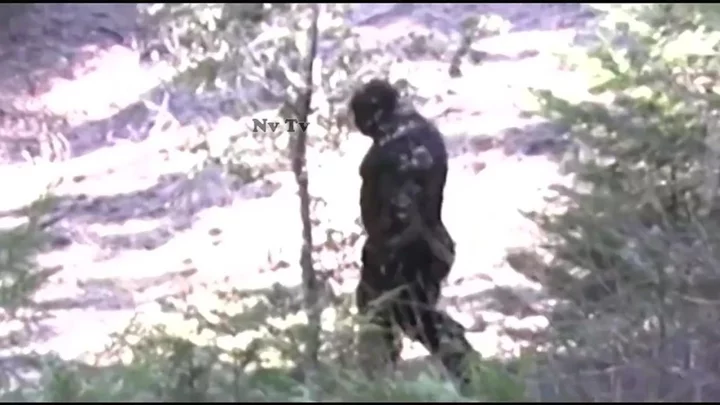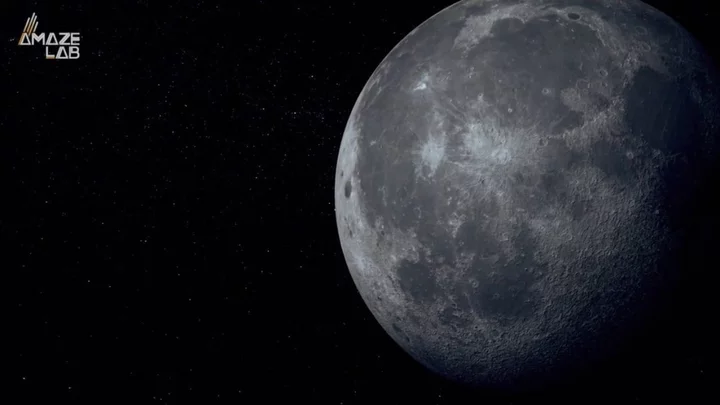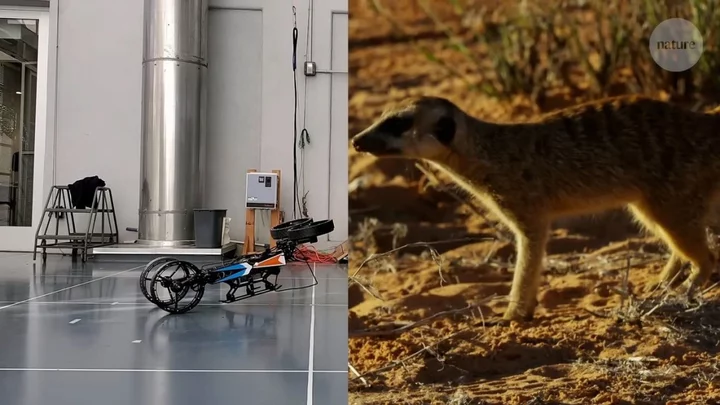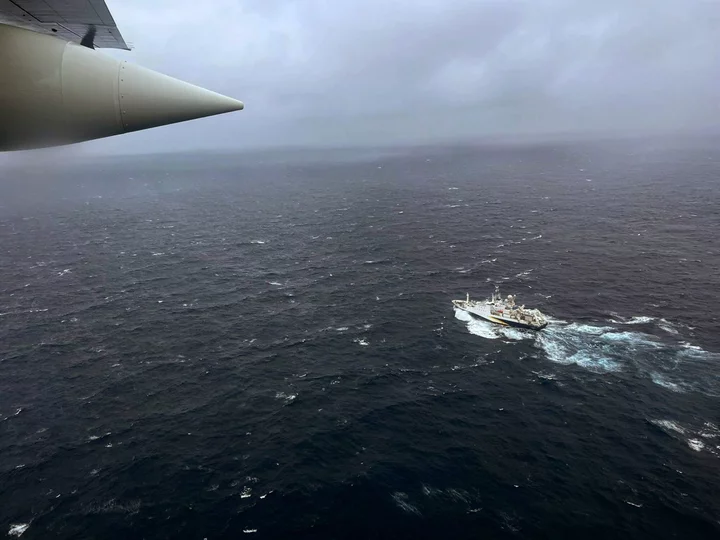
World’s youngest self-made billionaire shares the one piece of advice young people should follow
The world's youngest self-made billionaire has come out with some advice for people. Austin Russell, 28, who left Stanford University in 2012 to start his own hardware and software business, Luminar Technologies, after being awarded a $100,000 grant from the Peter Thiel Fellowship, said he recommends dropping out of university because it is "not for everyone". In an interview, he said: “If you’re wondering if I would have dropped out [without the grant], yeah. Absolutely. There was no doubt in anyone’s mind,” Austin stated. “It was going to happen anyway.” When asked if he would recommend dropping out of college to other students, the 28 year old entrepreneur stated: "Absolutely." Speaking to CNBC Make It, Austin continued: “College is not for everyone.It’s just sort of the traditional approach around what you do and what you’re supposed to do.” Sign up to our free Indy100 weekly newsletter He added people can learn from the internet, not just university. "All this information is available at our fingertips now online," the Luminar Technologies founder said. "This is not something that was true 50 years ago, [but] it totally is true now." He added: “You can do all these kinds of things that were never possible. You can get through entire curriculums and annual courses in weeks if you watch it back to back. There are so many ways to get knowledge imparted upon oneself." Have your say in our news democracy. Click the upvote icon at the top of the page to help raise this article through the indy100 rankings.
2023-07-02 18:20

Copy of What is Only Up? The game which is taking players hours or seconds to complete
The online gaming world has a new obsession, with a game called Only Up where you simply have to keep climbing up a series of random objects until you reach space. The game sounds relatively straightforward as anyone who has even the most basic concept of videogames knows how to climb up various structures. However, Only Up does not make the game easy for players as the seemingly infinite amount of objects range from pipes, bridges and trampolines but even the slightest of mistakes can end in disaster sending the players plummeting all the way back to the start of the game. Only Up was developed by SCKR Games and released in May 2023. It is available to play on Steam for the price of £8.50 ($10.80). Sign up to our free Indy100 weekly newsletter The game has gone viral thanks to high-profile streamers such as Adin Ross, Hasan Piker and iShowSpeed playing the game on their respective streams. iShowSpeed, who has 17 million followers on YouTube, attempts to play the game have proved to be particularly entertaining. At one point he lost 8 hours of progress. Thankfully, while playing the game on Tuesday the 18-year-old was able to complete the game in just under 5 hours. The most impressive run on the game so far has come from streamer Shade managed to find a glitch which allowed him to complete it in just 33 seconds. Whether you want to complete the game properly or use the glitch is your call but have fun regardless. Have your say in our news democracy. Click the upvote icon at the top of the page to help raise this article through the indy100 rankings.
2023-07-02 17:24

Scientists discover why a huge gravity hole has opened in the Indian ocean
Scientists have found an explanation for a 'gravity hole' in the Indian Ocean. A gravity hole is an area where gravitational pull is low, causing the seafloor to sink. Deep beneath the ocean, there is one that is three million square kilometers in size and previously it has confused scientists. Now two researchers from the Indian Institute of Science, Debanjan Pal and Attreyee Ghosh, think they have solved the mystery. More than 1,000 kilometers (621 miles) beneath Earth's crust, they found cold, dense remnants of an ancient ocean plunged into a 'slab graveyard' beneath Africa some 30 million years ago, stirring up hot molten rock. Sign up to our free Indy100 weekly newsletter Pal and Ghosh retraced the formation of the massive geoid by modeling how tectonic plates skimmed over Earth's mantle for the past 140 million years. They ran simulations and compared the shape of the oceanic low those models predicted with observations of the dent itself. The models that reproduced the Indian Ocean geoid low in its current form all had one thing in common: plumes of hot, low-density magma wafting up beneath the low. These plumes, as well as a distinctive mantle structure, are what created the geoid low; if they rise high enough, Pal and Ghosh reckon. "In short, our results suggest that to match the [shape and amplitude of the] observed geoid low, plumes need to be buoyant enough to come up to mid-mantle depths," the pair wrote. The first of these plumes appeared about 20 million years ago, to the south of the Indian Ocean geoid low, and around 10 million years after the old Tethys Sea sank into the lower mantle. As the plumes spread beneath the lithosphere and inched towards the Indian peninsula, the low intensified. But more research needs to be done to work out what is really going on as not all scientists are convinced. Science is crazy. Have your say in our news democracy. Click the upvote icon at the top of the page to help raise this article through the indy100 rankings.
2023-07-01 15:57

Meituan Joins AI Race by Buying Co-Founder’s Months-Old Firm
Meituan is buying a co-founder’s generative AI startup for almost $234 million, a deal that gets the food-delivery
2023-06-30 08:45

Virgin Galactic Reaches Space in Long-Overdue Commercial Debut
Virgin Galactic Holdings Inc. sent paying customers to the edge of space for the first time, a milestone
2023-06-29 23:51

'Alien spacecraft' found at the bottom of Pacific Ocean
For years people have been looking to the skies for signs of alien life - but maybe, they should have been looking at the bottom of the ocean this whole time. A Harvard physicist has claimed that parts of an alien 'spacecraft' could have been uncovered under the sea. Professor Avi Loeb set off on a search along the bottom of the Pacific Ocean and found 50 iron pieces which originated from the IM1 meteor. IM1 crashed off the coast of Papua New Guinea and Leob believes it could contain key information in the search for life out there in the universe, saying he hasn’t discounted the idea of the pieces being evidence of a “spacecraft” from an “extraterrestrial technological civilization” which crashlanded on Earth. Sign up to our free Indy100 weekly newsletter Loeb is currently the head of Harvard’s Galileo Project, focusing on the search for aliens, and he said the fragments they found must have come from “a natural environment different from the solar system, or an extraterrestrial technological civilization.” Speaking to Fox News Digital, Loeb detailed his thoughts on the origins of the meteor fragments by saying: “Given IM1's high speed and anomalous material strength, its source must have been a natural environment different from the solar system, or an extraterrestrial technological civilization.” He added that IM1 “is actually tougher and has material strength that is higher than all the space rocks that were catalogued by NASA. That makes it quite unusual.” Have your say in our news democracy. Click the upvote icon at the top of the page to help raise this article through the indy100 rankings.
2023-06-29 21:18

AI has revealed what infamous 'Bigfoot' footage truly is
It’s footage that’s fascinated conspiracy theorists for decades, but artificial intelligence is making people look at the most famous alleged sighting of ‘Bigfoot’ in a new light. Back in 1967, a clip known as the Patterson–Gimlin film claimed to show the mysterious creature, also known as ‘sasquatch’, walking through the Six Rivers National Forest in California. Roger Patterson and Robert Gimlin shot a figure moving in the woods in low resolution footage and claimed that they had discovered proof of the urban legend known as Bigfoot. The pair claimed at the time they tracked the figure before setting up filming equipment and capturing grainy video which looks briefly at the camera. Sign up to our new free Indy100 weekly newsletter While it was dismissed by the scientific community at the time and seen as a hoax by most people, it’s been poured over by conspiracy theorists ever since. It’s been analysed many times since, but new artificial intelligence has been used to present a clearer image than ever before. The clip has been stabilised and de-grained, and the results are clearer than ever. Social media user Rowan Cheung often shares the “latest developments in the world of artificial intelligence” and he posted the footage. Just as many conspiracists will have feared, the newly treated footage proves that it was clearly just a guy in a gorilla costume all along. Yes, we all knew that already, but this newly developed footage offers the clearest look at an infamous piece of footage yet – and people were quick to react on social media. “Nooppe! thats just a dude on his way to a costume party!” one wrote. Another said: “This is the ai work we needed.” One more said: “Just some bro out for a stroll.” “So it’s a dude in a gorilla suit?” a comment read. Artificial intelligence, it seems, has the power to surprise us when we least expect it. It’s not the first time ‘Bigfoot’ has made headlines this year, after people claimed to have discovered a sighting via Google Maps. Have your say in our news democracy. Click the upvote icon at the top of the page to help raise this article through the indy100 rankings.
2023-06-29 18:19

Scientists discover gigantic 'structure' under the surface of the Moon
The Moon has been a subject of awe and fascination for millennia, with its shape-shifting powers and enigmatic dark side. And though it’s the one celestial body on which man has taken (small) steps, we still have big leaps to go in understanding its potential and uncovering its secrets. However, one hidden feature of the Moon has been unearthed by scientists and it’s very, very big, and very, very heavy. Buried beneath its South Pole-Aitken basin – one of the largest preserved craters in the Solar System – is a structure which weighs at least 2.18 billion kilogrammes and measures more than 300km (186 miles) in depth and 2,000km (1,243 miles) in length. Sign up for our free Indy100 weekly newsletter The researchers who made the discovery, all based in the US, posited that the “anomaly” could be made out of metal from the core of an asteroid or oxides from the crystallisation of a magma ocean. "One of the explanations of this extra mass is that the metal from the asteroid that formed this crater is still embedded in the Moon's mantle,” lead author Peter B. James, from Houston’s Baylor University, said in a statement shared with IFLScience. Illustrating just how gigantic this thing is, he went on: "Imagine taking a pile of metal five times larger than the Big Island of Hawaii and burying it underground. That's roughly how much unexpected mass we detected.” The groundbreaking finding was made thanks to NASA’s Gravity Recovery and Interior Laboratory (GRAIL) mission, which measures changes in the Moon’s gravitational field. Data collected by GRAIL can then be used to study the internal composition of our cratered companion. The South Pole-Aitken Basin has been at the centre of numerous investigations because of just how unique it is. The region offers clues both on the interior composition of our closest satellite and its history, and who knows what other mysteries it holds... Have your say in our news democracy. Click the upvote icon at the top of the page to help raise this article through the indy100 rankings.
2023-06-29 17:49

Scientists design new shapeshifting 'morphobot' and it's like a real-life Transformer
Scientists have designed a new robot that people are dubbing a 'transformer' thanks to its ability to roll, fly, crawl, crouch, balance, and tumble its way through any terrain. Its adaptability is similar to that of a number of animals, including seals, meerkats, and chukar birds. The morphobot was created by the Northeastern University in the US, and will impact the future designs of response and rescue robots, as well as space exploration vehicles. Sign up to our free Indy100 weekly newsletter
2023-06-29 16:26

Titan Submersible Disaster Probes Face Tricky Test of Criminal Liability
US and Canadian officials are looking into what went wrong in a commercial deep-sea adventure and whether crimes
2023-06-29 05:18

What Is Trypophobia (And Is It Real)?
Many people report fearing clusters of holes. If you're one of them, this post is for you. But don't say we didn't warn you.
2023-06-29 03:26

Four Nasa volunteers are living on 'virtual Mars' for the next 12 months
Would you sign up to live in isolation for a year, all in the name of furthering scientific research? Probably not, we’re guessing, but that’s exactly what four NASA volunteers have agreed to do over the next 12 months. The participants will live in an environment created to simulate conditions on the surface of Mars as part of NASA's Crew Health and Performance Exploration Analog for 378 days. The people involved are research scientist Kelly Haston, structural engineer Ross Brockwell, emergency medicine physician Nathan Jones and US Navy microbiologist Anca Selariu. Sign up to our free Indy100 weekly newsletter The simulation has been built at the Johnson Space Center in Houston, Texas, and will see the four volunteers undertake a series of tasks as part of the exercise. Data collected over the next 12 months will help to inform future missions to send astronauts to Mars. During that time, the guests will take part in activities such as crop growing as well as simulated spacewalks and other operations. The 3D-printed hub they’ll spend their time in contains a kitchen, sleeping areas, two bathrooms as well as work and recreation spaces. The mission will also see the guests faced with simulated obstacles, which are designed to test responses to equipment failure, communication delays and other issues. Speaking at a recent briefing, the mission's principal investigator at NASA Grace Douglas said: “Thank you all for your dedication to exploration. Our best wishes go with you." Haston also spoke, calling her fellow participants an "amazing group of dedicated individuals who feel very passionate about space exploration and science." "The crew has worked so hard this month to get ready for this mission," Haston added. "It has been very special to be a part of such a tremendous group of scientists and specialists from a diverse set of backgrounds working together to bring CHAPEA 1, the first of three missions, to reality." Have your say in our news democracy. Click the upvote icon at the top of the page to help raise this article through the indy100 rankings.
2023-06-28 21:56
